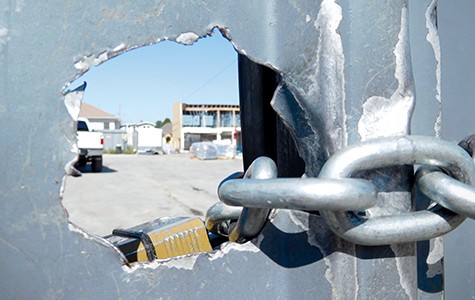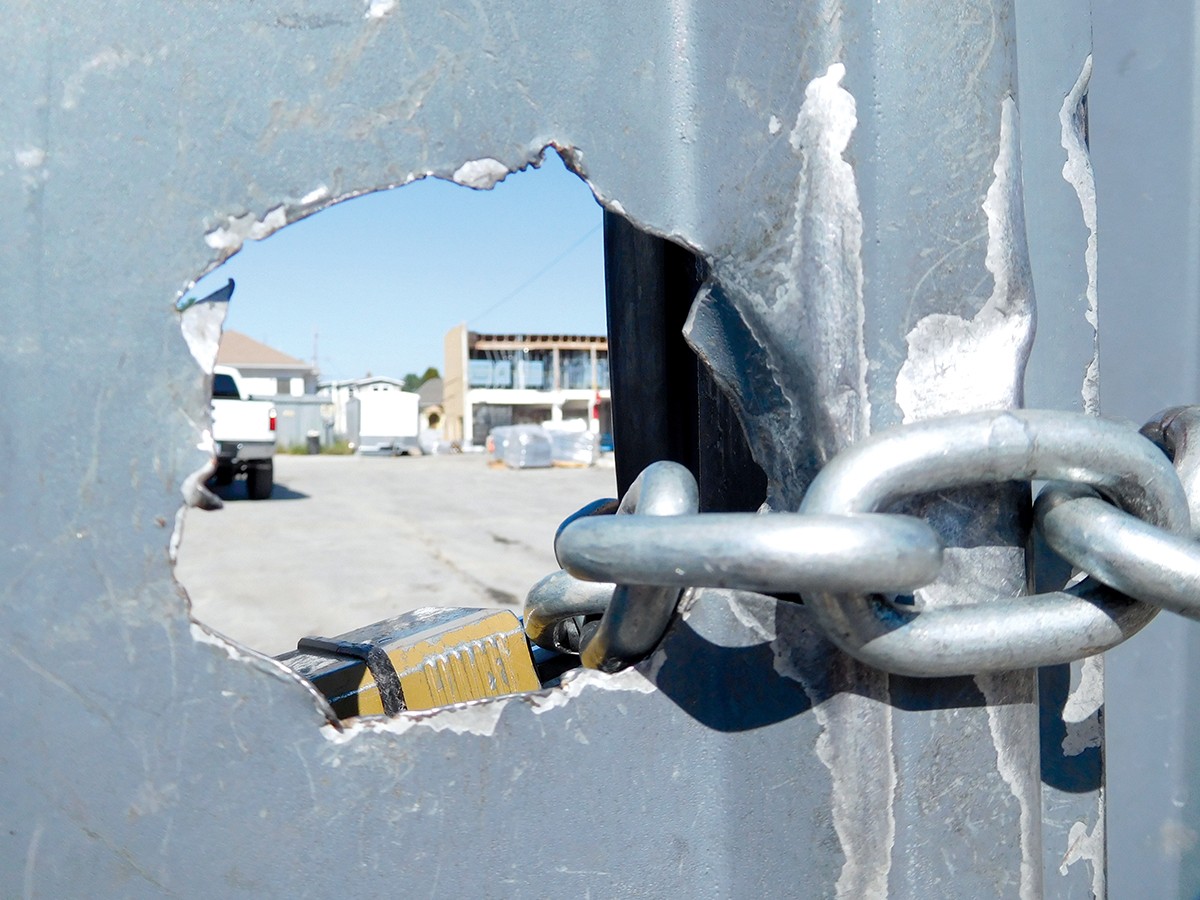For years, the warehouse at 1919 Market Street in West Oakland was home to a bohemian cast of artists, musicians, and hackers. They paid cheap rent for basketball court-sized lofts, and filled these vast spaces with sculptures, recording studios, and the occasional indoor pot grow.
This Oakland address was also infamous because of its numerous festering code violations. Yet for more than a decade, city officials looked the other way. Long time residents even claim that Jean Quan held a party in one of its lofts while she was mayor. And that, when Jerry Brown ran Oakland, one of his staffers resided in the warehouse. In other words, it was tacitly sanctioned as an art colony by the city’s highest officials.

The live-work warehouse at 1919 Market Street was recently demolished. Credits: Darwin BondGraham 
The live-work warehouse at 1919 Market Street was recently demolished. Credits: Darwin BondGraham 
Many former tenants doubt they will be able to return, especially now that the building has been torn down. Credits: Darwin BondGraham 
This era came to an end last year: City inspectors demanded that the landlord and property manager immediately repair hazards that plagued the building. One resident’s YouTube video campaign, and an Express article (see “The Hazards of Unsafe Housing in Oakland,” April 15, 2015), put even more pressure on the city and landlord to fix things.
But instead of repairing the building for the existing residents, the property manager quit, and the landlord sold the warehouse this past June. And, several weeks ago, the new owner demolished the warehouse.
Today, all that’s left are piles of concrete rubble and dirt hidden from street view by the only remaining pieces of the building, the facades facing Market and Myrtle streets.
“Their promise was to get everyone back in their same units at the same price,” said Ted Terbolizard, one of the building’s former residents. “Looks like it’s not going to happen.”
Terbolizard moved from San Francisco to Oakland in 2000, to escape rising rents during the dot-com bubble. Displaced again from Oakland, he now lives in Sacramento. He says he has no intention of moving back.
“It’s clear Oakland is hostile to tenants now,” said Terbolizard, who has filed a lawsuit against the former landlord, former property manager, and the new landlord who demolished the building. He and other tenants say city officials shoulder much of the blame, too, for not enforcing tenant-protection laws, and for letting their previous landlord ignore numerous code violations for years.
Rich Fielding, a building inspector with the city, said that the current landlord, Danny Haber, had permits to tear down part of the building, but that city officials think “they’ve gone beyond the scope of what they were allowed to do.” The city halted the demolition and other work last week pending a meeting with Haber, according to Fielding.
Many of the former tenants believe that the code violations were allowed to pile up in order to create an excuse to red tag the building and evict them, so that it could be turned into housing for more affluent renters.
One of the six lawsuits filed by the tenants against former landlord Seth Jacobson, Haber, and the building’s former property manager, John Protopappas, alleges that the three men and their companies “intentionally sent incomplete, confusing, or false notices to [the tenants] in an attempt to gain advantage over them, and prevent them from fully understanding their rights.” The lawsuits also claim that the landlords “would benefit from the building being deemed unfit for habitation and intentionally refused to make any repairs … that would abate the code violations.”
Last November, the city cited Jacobson for the building’s “substandard” condition and demanded that he obtain permits to “rehabilitate the building” and complete this work within 135 days. Some residents hoped they would be able to stay during the renovations, but the city declared the building a nuisance and red tagged it on January 28 (see “Dozens of Renters Lose Homes as City Closes 1919 Market Street Warehouse in Oakland,” January 28).
As they moved out, the tenants were offered relocation assistance from Jacobson and Haber, but some of the tenants allege these payments came late.
Had Jacobson followed the city’s original instructions, including the 135-day timeline to fix code violations, the rehabilitation work would have been completed in April or May. Instead, the building sat empty and became a magnet for graffiti and illegal dumping, according to photos that neighbors shared with the Express. Jacobson then sold the building to a company controlled by Haber in June. That same month, Haber obtained building permits to demolish part of the warehouse and start construction of a new, 63-unit live-work project.
The Express attempted to reach Jacobson via his attorney, William Wasko, but neither returned an email and phone call.
Joy Newhart used to run a dance company out of her studio at 1919 Market. Her windows offered a view across the bay to Mount Tamalpais. Speaking by phone from Philadelphia, she told the Express that she is now homeless. “I’ve been living in hotels for two months and am burning through my cash,” she said.
Newhart questions why the city never held Jacobson and Haber accountable for rehabilitating the building so that residents could move back in.
“I notified [Haber] that I wanted my same unit back,” said Newhart, referring to city renter-protection laws that allow displaced tenants to return to their old unit, or an equivalent one, when building repairs are completed. But Newhart isn’t sure she can afford to wait.
Fielding with the city said he understands tenants concerns. “They weren’t expecting this major of a project.”
Last week, Haber told the Express he expects construction to be completed in the summer of 2017. He also said his goal all along was to try to bring the building into compliance without displacing the tenants, but that he inherited a warehouse with fifteen years of deferred maintenance.
“We offered lots of plans to the compliance department where people wouldn’t have to leave,” Haber said. “We would have shifted people around in sections in the building and worked on other parts.”
But Haber said the city eventually deemed the building a fire trap. “I’d be really upset, too,” he said in response to tenant complaints.
The current landlord declined to identify his company’s investors, who bought the building from Jacobson. But plans on file with the city show that Haber’s group will spend $8 million to build an almost entirely new apartment complex inside 1919 Market’s old shell.
Many former residents have already given up hope that their previous landlord, Jacobson, will be held accountable by the city, or that their new landlord, Haber, will offer them units in the rebuilt building. “They promised us on paper that we would be allowed to move back in once they renovated,” said Pascal Pincosy, another former tenant. “But it became obvious to me they had no intention of doing this.”
Pincosy said he blames the city more than anyone: It looked the other way for years, he argued, and allowed a wealthy landlord to operate a dangerous, unpermitted residential building.
And when the city did finally step in, it resulted in the forced displacement of over one-hundred renters.
















